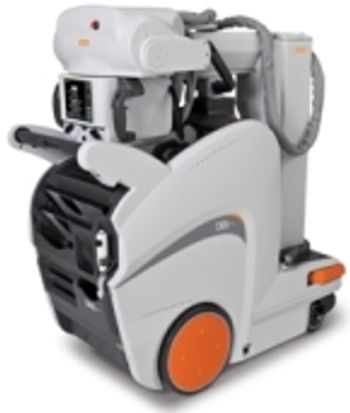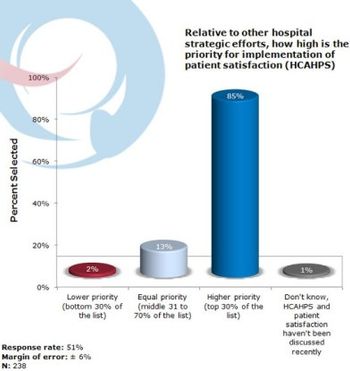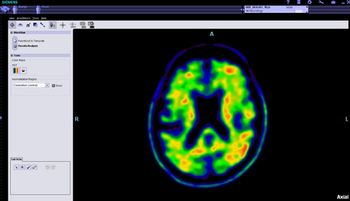
CMS’s 2013 proposed Medicare payment cuts were met with little surprise, but experts say practices should now assess the potential impact.

CMS’s 2013 proposed Medicare payment cuts were met with little surprise, but experts say practices should now assess the potential impact.

Mobile X-ray technology is increasing in popularity as demand grows to get technologists out of fixed X-ray rooms. Here’s a look at its benefits and challenges.

CMS plans to use hospital patient satisfaction survey data to determine reimbursement. Here’s how radiology groups can improve their scores.

Upgrade from 1.5T to 3T MRI? Invest in a wide bore machine or new software tools? Here’s what you need to know about the latest MRI advances.

Connecticut’s law mandating providers alert women if they have dense breasts has been slow to gain traction, but has resulted in more cancers found.

Optical mammography captures images without radiation, with greater patient comfort, and potentially fewer false positives, researchers say.

More imaging centers are facing acquisition, fueled by a new set of factors. Here’s how practices and hospitals can make these care partnerships effective.

The Meaningful Use Stage 2 final rule clarifies a few sticking points for radiology, including imaging accessibility, CPOE, and hardship exemptions.

New PET/MR technology from researchers at the University of Oslo promises same-time scanning with less radiation.

The rapid shift to VNAs for image storage and sharing will affect purchasing decisions and image management. Here’s what you need to know about the impact.

The future of image storage will depend upon some type of neutrality. Whether that storage is PACS neutral or archive neutral depends on facility preference.

Think Stark Law doesn’t apply to radiologists? Think again. Consultant Adrienne Dresevic details the federal laws that affect radiology marketing.

Chris Tomlinson, of Radiology Associates of The Children’s Hospital of Philadelphia, discusses the benefits of vendor neutral archives for storing and sharing images.

Radiology practices are turning to customer relations management (CRM) software to gather data and improve their referrals and marketing efforts.

Last fall, the FDA examined MRI safety concerns and ways to reduce injuries. But the industry hasn’t received national guidance on accomplishing this goal.

Poor documentation in your radiology reports may be to blame for your leaving rightfully-earned money unclaimed. Here’s where to look and how to boost revenue.

The latest proposed cuts to radiology reimbursement are “arbitrary” and “unfounded,” and will negatively impact practice management and patient care, industry leaders say.

It’s a tough job market for radiologists with many groups holding back on new hires. Here are six tips for improve your employment chances.

Optical ultrasound tomography holds promise for color imaging brain traumas to breast cancers. The head of one start-up venture explains this new technology.

Acquiring refurbished imaging machines is a growing trend as practices grapple with decreasing reimbursement or consider the possibility of future consolidations.

From selecting a vendor to picking the right machine, here are some points to consider when purchasing refurbished equipment.

Financial incentives designed to control medical imaging use aren’t working as expected, even in settings without a fee-for-service payment model, researchers found. But industry leaders say the data indicates that utilization has actually decreased.

C. Matthew Hawkins, MD, discusses challenges of natural language processing and how more standardization can reduce error rates of speech recognition software.

David Mendelson, MD, of Mount Sinai Hospital shares his experiences with the RSNA Image Share project, which gives patients primary control over their images.

The RADIANCE Toolkit, an open-source program developed by Tessa Cook, MD, PhD, and colleagues allows facilities to create customized dosing tables and reports.

The growing field of advanced analytics is helping radiology groups put their treasure troves of data to use to boost efficiency and improve quality.

Researchers are in the first stages of testing a new technology that may allow radiologists to detect breast tumors with improved accuracy without exposing patients to radiation.

Questions still exist about how best to use the growing list of radioactive tracers, but industry experts view these developments as significant positives for providers imaging patients with suspected Alzheimer’s.

Recent recommendations for lung cancer CT screening from the American Lung Association could increase your work flow and change the way insurance providers pay for screenings.

If physicians are required to tell patients when they have dense breasts, how do they determine what counts as a dense breast? Kwan-Hoong Ng, who wrote a commentary on the issue for Lancet Oncology, lays out the issues in this interview.